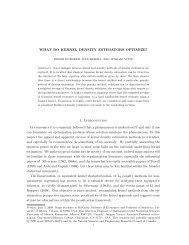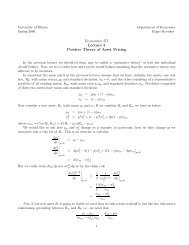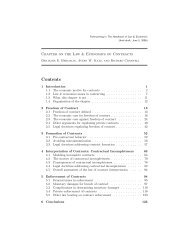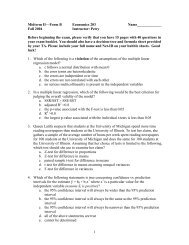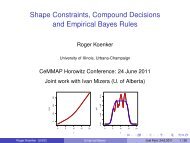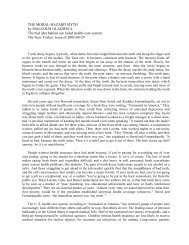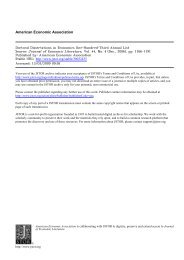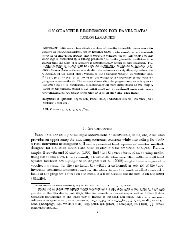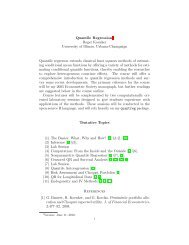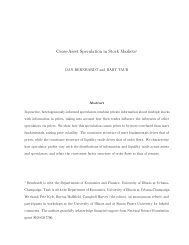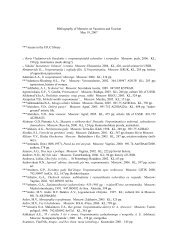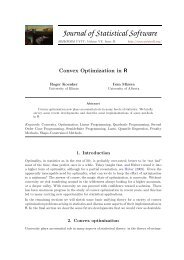1. Introduction - Econometrics at Illinois - University of Illinois at ...
1. Introduction - Econometrics at Illinois - University of Illinois at ...
1. Introduction - Econometrics at Illinois - University of Illinois at ...
You also want an ePaper? Increase the reach of your titles
YUMPU automatically turns print PDFs into web optimized ePapers that Google loves.
Roger Koenker and Zhijie Xiao 11To test our hypothesis when is unknown, set (t) =(1;F ,10(t)) > and for anestim<strong>at</strong>or ^ n s<strong>at</strong>isfying,p n(^n , 0 )=set ~(t) =^ +^ 0 F ,10(t) =^ > n(t). Then(3.4)(3.5)Z 1^v n (t) = p n' 0 (t)(^(t) , ~(t)= 00h 0 (s)dv n (s)+o p (1)= p n' 0 (t)(^(t) , (t) , (~(t) , (t)))= 0= v n (t) , p n' 0 (t)(^ , 0 ) > (t)= 0Z 1= v n (t) , ' 0 (t)(t) > h 0 (s)dv n (s)+o p (1)Thus, if we take g(t) =(t; (t) > ' 0 (t)) > ,we obtain,_g(t) =(1; _ f=f;1+F ,10(t) _ f=f) >where _ f=f is evalu<strong>at</strong>ed <strong>at</strong> F ,10(t), so for example in the Gaussian case,_g(t) =(1; , ,1 (t); 1 , ,1 (t) 2 ) > :Given the represent<strong>at</strong>ion (3.4) and the fact th<strong>at</strong> (t) lies in the linear span <strong>of</strong> g, wemay again apply Khmaladze's martingale transform<strong>at</strong>ion to obtain,0~v n (t) =Q g^v n (t);which can then be shown to converge to the standard Brownian motion process. Aswe have suggested in Section 2, we would like to consider a two sampleversion <strong>of</strong> theforegoing problem in which weleave the precise functional form <strong>of</strong> the distributionF , and therefore the form <strong>of</strong> the function, g, unspecied under the null. As we havealready noted, this is a special case <strong>of</strong> the general quantile regression tests introducedin the next section.4. Quantile Regression InferenceThe classical linear regression model asserts th<strong>at</strong> the conditional mean <strong>of</strong> the response,y i , given covari<strong>at</strong>es, x i ,may be expressed as a linear function <strong>of</strong> the covari<strong>at</strong>es.Th<strong>at</strong> is, there exists a 2 R P such th<strong>at</strong>,E(y i jx i )=x > i :The linear quantile regression model asserts, analogously, th<strong>at</strong> the conditional quantilefunctions <strong>of</strong> y i given x i are linear in covari<strong>at</strong>es,(4.1)F ,1y i jx i(jx i )=x > i ()for in some index set T [0; 1]: The model (4.1) will be taken to be our basicmaintained hypothesis. For convenience we will restrict <strong>at</strong>tention to the case th<strong>at</strong>



